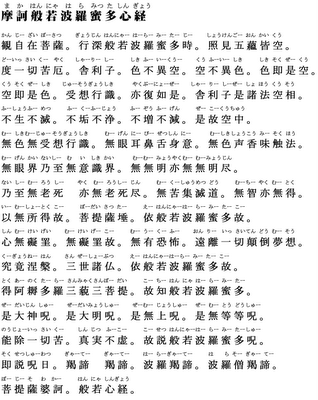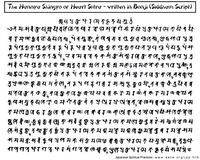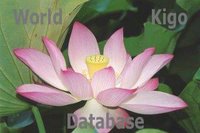Long Life, Blue ZonesQUOTE:
'Blue Zones' gives tips for long life© By Jeff Baenen, THE ASSOCIATED PRESSIf you are looking for a Fountain of Youth, forget pills and diet supplements. Adventurer Dan Buettner has visited four spots on the globe where people live into their 90s and 100s and outlines how they add years of good life in his new book, "The Blue Zones."
The answer, Buettner says, includes smaller food portions, an active lifestyle and moderate drinking.
"If someone tells you they have a pill or hormone (that extends life), you're about to lose money," Buettner says.
Buettner identifies four hot spots of longevity: the mountainous Barbagia region of Sardinia, an island off the coast of Italy; the Japanese island of Okinawa; a community of Seventh-day Adventists in Loma Linda, Calif., about 60 miles east of Los Angeles; and the Nicoya Peninsula of Costa Rica, in Central America.
(The term "Blue Zones" takes its name from the blue ink Belgian demographer Michel Poulain used to circle an area of long-living Sardinians on a map.)What Buettner found in his seven years of research and travel were common denominators among the vigorous super-elderly - close family relationships, a sense of purpose, healthy eating habits. He distills them into what he calls the Power Nine that readers can use to create their own Blue Zone.
"Picking half a dozen things off of this al a carte menu, and sticking to it, is probably worth eight to 10 (extra) years for the average American. And you'll look younger and feel younger on the way," says Buettner, a tall and lean 48-year-old who says he hopes to live until at least 100.
Buettner turned to probing the secrets of the longest-living cultures after leading three long-distance bicycle expeditions - from the tip of North America to the tip of South America; across the United States, Europe and the Soviet Union; and across Africa - in the 1980s and 1990s. He also used the Internet to take classrooms on interactive quests to solve everything from the collapse of ancient Mayan civilization to human origins in Africa.
Buettner made his first expedition to
Okinawa in 2000 and eventually wrote a National Geographic cover story, "The Secrets of Long Life," in November 2005. That led to National Geographic publishing "The Blue Zones" this March. The book debuted at No. 15 on The New York Times' list of advice book bestsellers but has since dropped off.
Living long - even forever - is a human desire throughout history, says Dr. Robert Butler, president and CEO of the International Longevity Center-USA in New York. But Butler says he's skeptical of claims of places of long-living people.
"There's always been these rumours but they've always turned out to be inaccurate," said Butler, who appears in "The Blue Zones" but has not read it.
Buettner is aware of the skepticism, but says he and his team of demographers, which included Poulain, scrupulously checked birth and death records and vetted the ages of Blue Zone residents in his book.
"We have the numerical data that shows that these places (in 'The Blue Zones') are living longer. It's not just anecdotal," Buettner said.
While ranking populations by average life expectancy is nothing new, Buettner has "done a nice job putting faces to it and looking at some of the special characteristics - be it diet or happiness - that typify some of these regions," said Dr. Thomas T. Perls, director of the New England Centenarian Study and an associate professor of medicine at the Boston University School of Medicine. Perls also appears in the book.
Because of obesity and smoking, Americans are living about 10 years less than they should be, said Perls, co-author of the book "Living to 100." He said if Americans embraced the healthy habits advocated by Buettner, the impact on public health "would be huge."
Buettner found long-lived people have a sense of purpose and a strong support network. In
Okinawa, women gather in social networks known as moais.
"Even at age 100, they're all getting together in their moai ... at 5 o'clock every day. They sit around, they drink a couple glasses of sake, they gossip, they talk about sex. If one doesn't show up to the afternoon gathering, the other four sort of hobble over to see if she's fallen down or if she needs help," Buettner said.
Women in Okinawa also tend to be spiritual leaders, which imbues them with a sense of purpose, or "ikigai," Buettner said.
Regular attendance at religious services also is a factor, Buettner said. Seventh-day Adventists observe the Sabbath on Saturday, which gives them a weekly break from stress.
"There's no question but having a spiritual sense - a sense of belonging, a sense of personal value - enhances a person's ability to follow good health habits. Out of that arises the longevity," said Dr. Richard Hart, president and CEO of Loma Linda University Adventist Health Sciences Center.
Limiting food intake and eating healthy also are key, Buettner said. Elderly Okinawans follow a maxim to eat only until their stomachs are 80 per cent full, Buettner said. Centenarians in Sardinia, Okinawa and Nicoya rarely ate meat, and some Adventists stick only to a plant-based diet. Adventists frequently eat nuts while Okinawans eat tofu.
Drinking in moderation can help, Buettner said. Sardinians drink a dark red wine that's loaded with antioxidants, he said.
Exposure to sun - a source of vitamin D - also is common in Blue Zones, where the residents are tan, Buettner said.
"We shouldn't be burning ourselves, we shouldn't be frying. But 20 minutes a day, in the climates or the latitudes that have quality sunshine, it's probably a good takeaway," he said.
Buettner also advocates low-intensity physical activity. After years of biking, Buettner has switched to yoga for his main exercise. He lives on Lake of the Isles in Minneapolis, where he can skate around the lake in the summer and cross-country ski across it in the winter.
"You identify what you like to do, and you do it, because you're likely to do that over the long run," Buettner said.
Buettner also recommends "de-conveniencing" your home - getting rid of the TV remote or the power lawnmower. Buettner moved up to the third floor of his spacious home "so every time I need a shirt I walk three flights of stairs."
Modern life is threatening the Blue Zones' reputation for longevity, Buettner said. Obesity rates have soared in Sardinia, where young people are eating chips and drinking soda pop, he said.
"The phenomena of longevity is disappearing in all places, except for maybe among the Adventists, and the purpose of this book was to capture it and observe it before it disappeared, and measure it," Buettner said.
-
On the Net:
http://www.bluezones.com
http://www.nationalgeographic.com
Dan Buettner's nine tips for longer life, from his book "The Blue Zones":
1. "Move Naturally.
Be active without having to think about it."
2. "Hara Hachi Bu.
Painlessly cut calories by 20 per cent."
3. "Plant Slant.
Avoid meat and processed food."
4. "Grapes of Life.
Drink red wine (in moderation)."
5. "Purpose Now.
Take time to see the big picture."
6. "Down Shift.
Take time to relieve stress."
7. "Belong.
Participate in a spiritual community."
8. "Loved Ones First.
Make family a priority."
9. "Right Tribe.
Be surrounded by those who share Blue Zone values."
- Source: "The Blue Zone," by Dan Buettner.
:::::::::::::::::::::::::::::::::::::::::::::::::::::::::::::::::::::::::::::::::::::::::::::::::::::
極楽庵
GokuRakuAnだるま資料館
Daruma Museum, Japan :::::::::::::::::::::::::::::::::::::::::::::::::::::::::::::::::::::::::::::::::::::::::::::::::::::

























